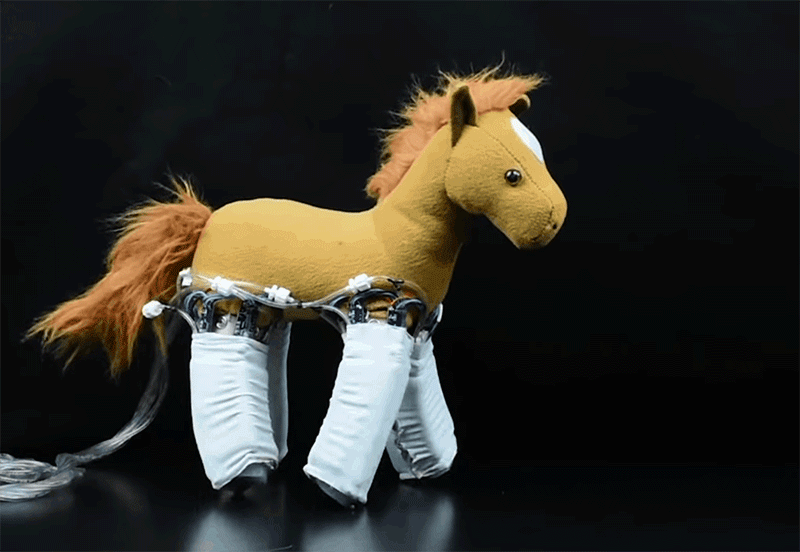Technology News – What if you could turn a stuffed animal into a robot?
It’s not an idle question. Researchers at Yale University have developed “robotic skins” that can be wrapped around everyday objects to turn them into soft robots that can move, grasp, and even — in a crude way — walk.
The skins are made of elastic sheets embedded with sensors and remotely operated actuators, which work together to create the makeshift bots. In recent tests, a plush horse wrapped with the skin was able to move its legs and a skinny foam tube was turned into a wriggling robo-worm.
That may sound silly, but the scientists have serious applications in mind.
Rebecca Kramer-Bottiglio, an assistant professor of mechanical engineering and materials science at the university and the leader of the research, said robots improvised on the fly could perform important tasks in disaster zones and other hazardous settings.
“A designer could quickly construct a robot using the robotic skins wrapped around whatever deformable materials they have access to and stick a camera on it, and then deploy the robot for exploration of small or dangerous spaces,” she told NBC News MACH in an email. “Robotic skins can be applied to, removed from, and transferred between different objects, and used in combination to create many different configurations to perform many different tasks.”
Other researchers praised the research, which was described in a paper published online Sept. 19 in the journal Science Robotics.
“This is a very exciting study that demonstrates the versatility and adaptability of soft robotics,” Conor Walsh, an associate professor of engineering and applied sciences at Harvard University, told MACH in an email. “The idea that we can have a soft and flexible sheet, wrap it around any surface, have it learn what it is attached to and then move it in some desired way has lot of potential.”
Walsh, who was not involved in the research, said he is keen to see how other kinds of sensors and actuators might be used to achieve a wider repertoire of movements.
Kramer-Bottiglio has her own ideas about advancing the research. She and her colleagues plan to test the skins on different materials, including clay structures that can morph into different shapes. The scientists also plan to use 3D printing to build some of the components, she said.
But the researchers are also eager to see what ideas others have for their technology. “I’m really excited to see what other people will do with robotic skins,” Kramer-Bottiglio said. “The possibilities are endless.”
by Denise Chow, NBCNews.com

